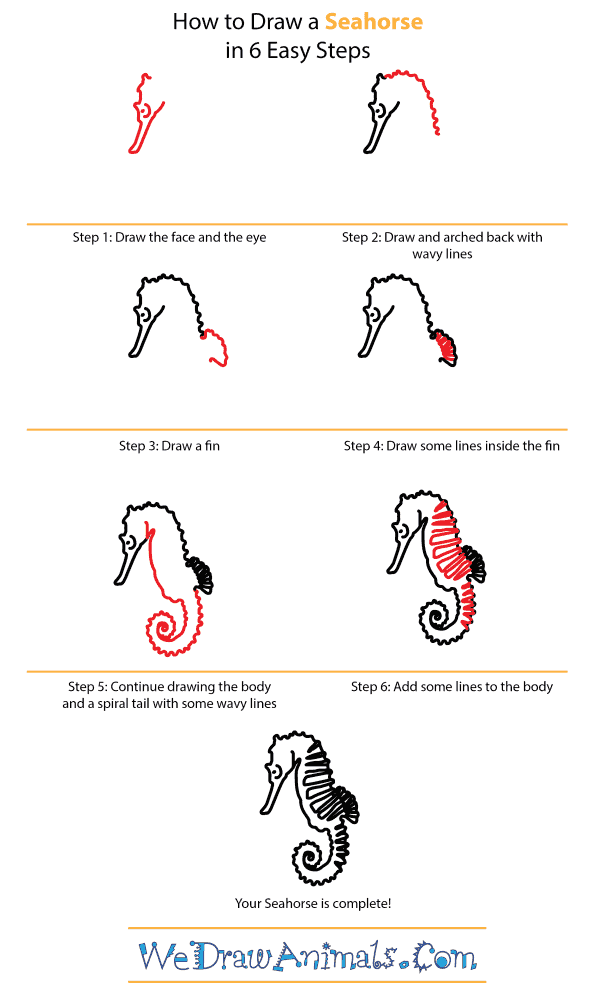In this quick tutorial you'll learn how to draw a Seahorse in 6 easy steps - great for kids and novice artists.
The images above represent how your finished drawing is going to look and the steps involved.
Below are the individual steps - you can click on each one for a High Resolution printable PDF version.
At the bottom you can read some interesting facts about the Seahorse.
Make sure you also check out any of the hundreds of drawing tutorials grouped by category.
How to Draw a Seahorse - Step-by-Step Tutorial
Step 1: Draw a downward-facing face with a long snout and jagged-looking forehead.
Step 2: To make the back of the head, add an arched line with many uneven lines.
Step 3: Draw a small fin on the back, as well with uneven lines.
Step 4: Draw some lines inside of the fin for detail.
Step 5: Continue to draw the body by drawing a slightly curved line for the belly, and a spiraling tail.
Step 6: To finish this seahorse drawing, just add some details to the body of the seahorse, like lines and dots. Voila!
Interesting Facts about the Seahorse
Seahorses move through the water by using the small fin on their back that can swish up to thirty-five times per second. The smaller fins on their head are used for steering. They prefer to swim in pairs with their tails linked together. Seahorses swim upright and blend in with plants to avoid being eaten. Due to their body shape, Seahorses can die of exhaustion in rough waters because they are inept swimmers. They can anchor themselves to sea grass areas and corals. Seahorses mate for life and are the only animal species where the male bears the young.
Did you know?
- Their only predator is the crab
- Seahorses feed constantly on plankton
- Their eyes can move independently
- Seahorses do not have stomachs or teeth, so they must eat constantly to stay alive
- This means they eat up to three thousand brine shrimp per day
Lesson Plan Idea – Exactly how many shrimp to Seahorses eat? Have several print offs of brine shrimp pictures, allow your class to cut them out (possibly color them) and fill a tub with shrimp. See if you can cut out three thousand shrimp to give your students a visual of just how muh a seahorse eats.







